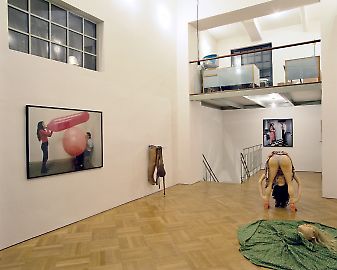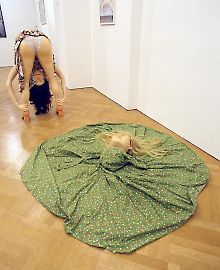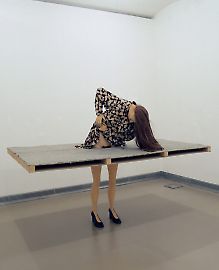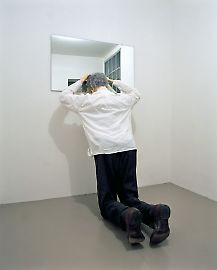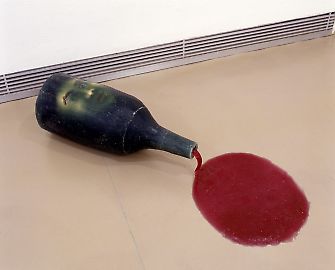Paul de Reus --
[Paul de Reus] uses the human form, parts of the body and trivial objects from everyday life, carves them in wood and combines them with other materials like rubber, hair or textiles. […] This involves putting apparently incompatible objects together thereby producing an iridescent flux of reality and fiction. He links things that are natural and artificial, animate and inanimate, male and female in his three-dimensional works, thus alienating familiar patterns of perception. […]
Although grotesque design principles are to be found even in medieval art, the concept was not fully established until the Renaissance. […] In the early years of this century as well grotesque elements appear in art, dismembered corpses and fantastic combinations, as in the work of Otto Dix, George Grosz or in Surrealistic works. These phenomena are an attempt to make us aware of the Absurd and the Abnormal, to capture the demonic and threatening features of an alienated world. But paradoxical elements in Paul de Reus’ art draw upon this as well. By linking things that actually exclude each other, he is able to make everyday reality comical. The proverbial wisdom, which sounds banal, that laughter and tears can be very close together, is in the sense of such a change from melancholy to comedy, significant to Paul de Reus. […]
Recognizing one’s own physical appearance in the mirror in early childhood––according to structuralist psychology––gives rise to an imaginary self-image, it arouses a desire for an ideal totality and intactness of the ego that develops in the very moment one sees one’s own body in the mirror. Paul de Reus’ figures address the ideal image of desire, also central to the myth of Narcissus, for a complete identification of the ego with oneself and at the same time reflect that desire by means of alienating elements. It is not merely that his ensembles that work with reflections do not provide a realistic image of his figures––they also reveal the imaginary structure of the human self-image, and question this. His sculptures often have monstrous proportions entire parts of the body are missing, some consists only of fragments, others are caught in unnatural, grotesque situations and positions. The sometimes alarming realistic effects are caused, on the one hand, by the fact that the sculptures are life-sized and on the other hand by the use of various natural looking materials like hair or textiles and their coloring. […] Paul de Reus’ works do not have a reproducing function. They are neither portraits, nor dolls, nor robots, nor machines; they are creations that radiate their own individuality and suggest the intensity of their creator’s analysis of himself, his surroundings, his thoughts and his fantasies.
Ulrike Franz, “Humor in der Kunst des Paul de Reuss,” in: exhibition catalogue Ein haus mit zuviel besuch, Paul de Reus, Galerie der Stadt Esslingen am Neckar, Esslingen 1994, pp. 41.


